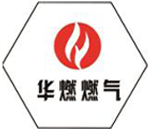
Nov . 27, 2024 12:07
Back to list
Gas Pressure Vessel Design and Safety Considerations for Optimal Performance and Efficiency
Understanding Gas Pressure Vessels An Insight into Safety and Efficiency
Gas pressure vessels, often referred to as pressure containers or gas tanks, are critical components in various industrial applications, from energy production to pharmaceuticals. These containers are designed to hold gases at a pressure significantly higher than the ambient atmospheric pressure. Understanding the functionality, design, safety measures, and applications of gas pressure vessels is essential for engineers, safety personnel, and anyone involved in industries that utilize these efficient yet potentially hazardous systems.
Design and Functionality
Gas pressure vessels are typically made from high-strength materials capable of withstanding high pressures. Common materials include carbon steel, stainless steel, and composite materials that provide resistance to corrosion and thermal fluctuations. The design of these vessels is governed by stringent codes and standards, such as the ASME Boiler and Pressure Vessel Code, which ensures that the vessels can safely hold the intended pressures and temperatures.
These vessels function by utilizing the principles of gas laws, which dictate the behavior of gases under various temperature and pressure conditions. To maximize efficiency, gas pressure vessels are often designed to minimize volume while maximizing surface area. This design enhances the vessel's thermal efficiency and allows for better heat exchange in applications where temperature control is critical.
Safety Considerations
Safety is paramount in the design and operation of gas pressure vessels. The consequences of a failure can be catastrophic, leading to explosions or leaks that pose risks to both personnel and the environment. As such, multiple safety protocols are implemented in their design and maintenance
1. Regular Inspections Routine checks ensure that vessels are free from corrosion, cracks, and other forms of wear. Non-destructive testing methods, such as ultrasonic testing or radiography, are often employed.
.
3. Control Systems Modern gas pressure vessels are equipped with sophisticated monitoring systems that track pressure and temperature in real-time. These systems help operators to respond promptly to any anomalies.
وعاء ضغط الغاز

4. Emergency Protocols Facilities that utilize gas pressure vessels must have comprehensive emergency response plans. This includes training personnel on evacuation procedures and providing safety gear.
Applications
Gas pressure vessels are utilized across a wide array of industries. Here are some notable applications
1. Energy Sector In natural gas storage and transportation, pressure vessels play a crucial role in storing gas for later use, which is essential for balancing supply and demand.
2. Manufacturing Compressed air systems commonly use gas pressure vessels to provide a steady supply of air for powering tools and machinery.
3. Chemical Processing In the production of various chemicals, gas pressure vessels are used for reactions that require high pressure to increase efficiency and yield.
4. Pharmaceuticals Controlled environments are necessary for producing drugs, and pressure vessels are employed to ensure sterile conditions during processes such as autoclaving.
Conclusion
Gas pressure vessels are indispensable in numerous sectors, combining engineering precision with stringent safety measures to ensure efficiency and reliability. As industries evolve and the demand for energy and chemical production increases, innovations in material science and design will continue to enhance the performance and safety of these vital components. Understanding their complexities not only reinforces the importance of rigorous safety standards but also highlights the need for ongoing education and training in handling these potentially hazardous systems. In a world that increasingly relies on technology and high-pressure systems, ensuring the safety and functionality of gas pressure vessels will remain a top priority for engineers and safety professionals alike.
Latest news
-
Safety Valve Spring-Loaded Design Overpressure ProtectionNewsJul.25,2025
-
Precision Voltage Regulator AC5 Accuracy Grade PerformanceNewsJul.25,2025
-
Natural Gas Pressure Regulating Skid Industrial Pipeline ApplicationsNewsJul.25,2025
-
Natural Gas Filter Stainless Steel Mesh Element DesignNewsJul.25,2025
-
Gas Pressure Regulator Valve Direct-Acting Spring-Loaded DesignNewsJul.25,2025
-
Decompression Equipment Multi-Stage Heat Exchange System DesignNewsJul.25,2025

